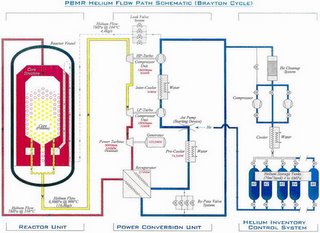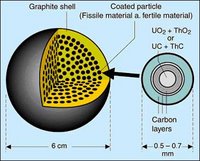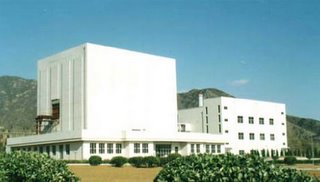 In a week when the "colleagues" started picking up the pieces after the Russian gas crisis, focusing once again on how they could turn the situation, to their advantage, a week that also coincided with a report that, for the first time in decades, the UK was no longer self-sufficient in oil, one of the most significant pieces of news not to get into the newspapers was tucked into a Reuters report on French energy policy.
In a week when the "colleagues" started picking up the pieces after the Russian gas crisis, focusing once again on how they could turn the situation, to their advantage, a week that also coincided with a report that, for the first time in decades, the UK was no longer self-sufficient in oil, one of the most significant pieces of news not to get into the newspapers was tucked into a Reuters report on French energy policy.According to this source, France is planning measures to cut oil use by 2020,by introducing a new reactor design, with L'Escroc announcing that, in 20 years time, French trains will not use a drop of oil.
Already the world's second largest nuclear power producer - after it decided after the 1970s oil shocks to reduce its oil dependence by building a fleet of 58 nuclear reactors – France is now to pick up on the design of the so-called pebble-bed nuclear reactor, having one of these fourth generation reactor in use by 2020.
We have referred to these plants before. The design originated in Germany but was abandoned after opposition from the yoghurt knitters in the wake of the Chernobyl disaster, but picked up by the South Africans and latterly the Chinese, who already have a prototype up and running.

 The system is well worth the study, comprising a gas cooled reactor (see illustration above), which relies not on the traditional uranium pile, but graphite coated uranium oxide balls, the coating of sufficient thickness to allow critical mass when the balls (or pebbles) are stacked in a hopper. But the genius of the system is that, if the mass overheats – the cause of the potential “China syndrome” meltdown accident – the graphite coating expands and separates the uranium cores, whence critical mass is lost and the cooling takes place spontaneously, without no outside intervention.
The system is well worth the study, comprising a gas cooled reactor (see illustration above), which relies not on the traditional uranium pile, but graphite coated uranium oxide balls, the coating of sufficient thickness to allow critical mass when the balls (or pebbles) are stacked in a hopper. But the genius of the system is that, if the mass overheats – the cause of the potential “China syndrome” meltdown accident – the graphite coating expands and separates the uranium cores, whence critical mass is lost and the cooling takes place spontaneously, without no outside intervention. In pebble bed technology, therefore, the human race has the prospect of the first truly fail-safe and therefore safe nuclear energy production. But, on top of this, because the system is gas-cooled (using helium gas for heat transfer) and is unpressurised, individual plants are smaller and can be massed produced, making them cheaper to provide and easier to locate.
In pebble bed technology, therefore, the human race has the prospect of the first truly fail-safe and therefore safe nuclear energy production. But, on top of this, because the system is gas-cooled (using helium gas for heat transfer) and is unpressurised, individual plants are smaller and can be massed produced, making them cheaper to provide and easier to locate.Coupled with this are developments in hydrogen production, with the use of high temperature, high pressure hydrolysis, which is now reaching the stage where it is a commercially viable. Using this technology, the Chinese intend to break away from the classic application of nuclear power – using it only for the "base" load, with peak demand met from more flexible generation sources – to provide for peak capacity while using the off-peak capacity for hydrogen production.
With the first of the commercial pebble-bed reactors due to be on-line by 2010, china at one could become the first nuclear/hydrogen economy, freeing itself from the tyranny of imported energy supplies, and leave the rest of the world standing.
But what is so significant about the Reuters report is that France seems also to have realised the potential of pebble-bed technology. Thus, while the "colleagues" bicker about the "European dimension" to the energy crisis and we despoil our countryside with wind factories, the French, as always, are looking after number one, and are set to steal a march on the rest of Europe.
Good luck to them. We should be doing the same.
COMMENT THREAD
No comments:
Post a Comment
Note: only a member of this blog may post a comment.